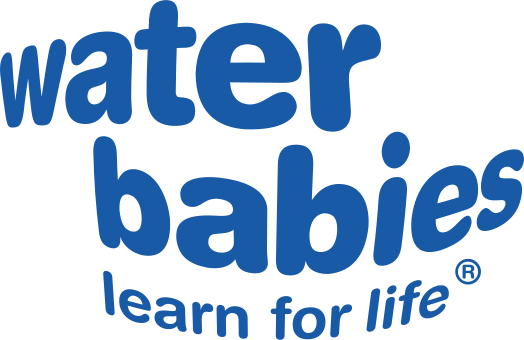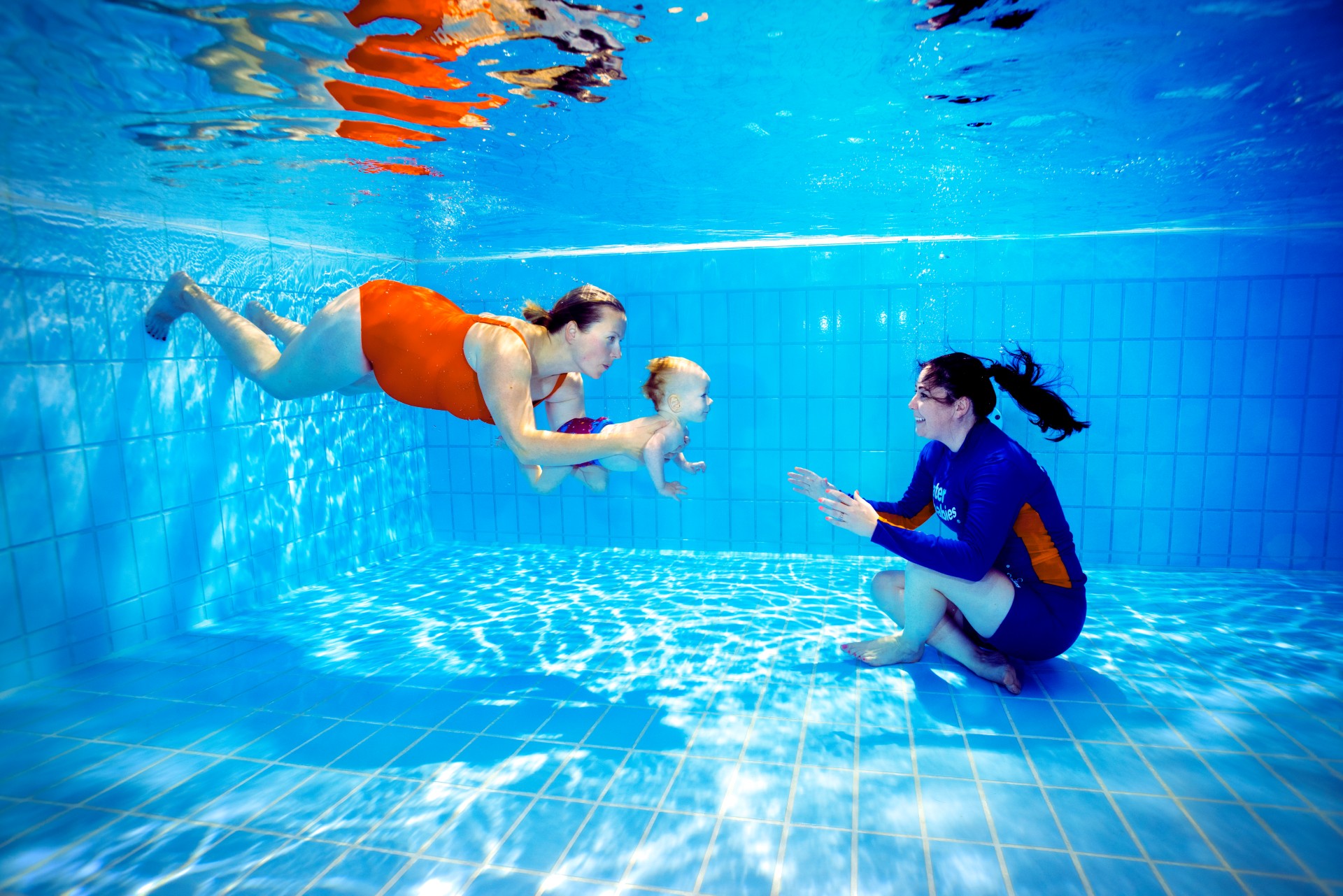From teaching water safety skills to boosting their confidence in and out of the water, taking your little one swimming as early as possible can help children in the early years with their emotional, cognitive, and physical development as they grow. This National Baby Swimming Week, we’ll be explaining in more detail the importance of baby and toddler swimming and how to introduce your baby to the water.
Why is it important for babies to swim?
According to the World Health Organisation, drowning is sadly the third leading cause of unintentional injury death worldwide, this means around 372,000 people die from drowning around the world every hour. But studies have shown that formal swimming lessons reduce the risk of drowning in children aged one to four years by 88%. The Griffith University, who are based in Southeast Queensland in Australia, did a 3-year study where they looked at a group of children who took part in swimming against those who didn’t. They found that by the time a child, who had been through early years swimming went to school, they would be on average:
- 2 months ahead of their peers in reading
- 11 months ahead in oral expression
- 6 months ahead in mathematics reasoning
- 17 months ahead for story recall
- 20 months ahead for understanding directions
As 90% of the neurons in the brain are formed and connected by the time a child reaches 5, the evidence reveals the importance and value of being physically active from as young an age as possible, helping to reach their physical, emotional, cognitive, and physiological developmental milestones as they grow.
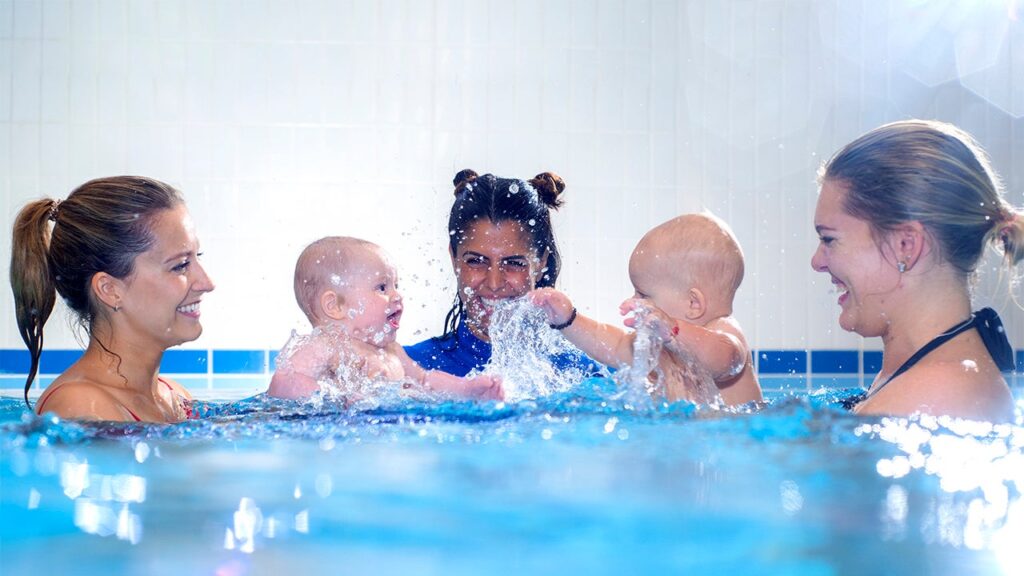
Water provides a weightless environment as well, so babies can use more muscles and move freely, which helps to develop muscle tone and strength. This means baby swimming can support little ones who have disabilities, or who aren’t able to, or struggle to, be active and move in traditional dry-side activities. At Water Babies, our classes are completely inclusive, and our teachers support families whose children need extra special care within classes.
Studies have also shown that swimming results in increased lung volume, better breathing techniques, strong heart and lung functions, and improved general fitness in little ones who swim in the early years. Doing regular exercise as a child can lead to a lifetime of activity, which will only improve their health throughout their life. Babies who swim regularly also have improved appetites and sleeping patterns after swimming – which is a win-win for everyone!
When can babies go swimming for the first time?
The NHS guidelines in the UK state ‘You can take your baby swimming at any age, both before and after they have been vaccinated. It does not matter if they have not yet completed their course of vaccinations.’
We encourage parents to bring their little one swimming as soon as they feel comfortable to do so. It’s never too early or too late to start swimming – when they’re ready, we’re ready!
Learning key safety skills
There’s nothing more important than knowing that your little one has the ability to keep themselves safe. That’s why safety skills are at the heart of all we do at Water Babies, and it forms a key part of every lesson.
In 2022 we collaborated with The Good Play Guide on a 12-month research project into baby and toddler swimming, with the headline stats already revealing that water safety and water confidence are the priorities for parents and guardians when it comes to their little ones baby swimming journey. Right from day one, you and your little one will learn how to enter and exit the pool safely and together will learn techniques that one day could save a life at Water Babies.
Throughout their lessons, your baby will develop the strength to hold on to the side of the pool and move across the wall. And when they grow into toddlers, this skill will progress as they’re a bit more keep to jump in! So we’ll teach them how to do this safely.
The end goal will be for your child to able to independently swim to the side and climb out to safety, wherever they are.
Bonding
Baby swimming provides focused time in the water, which helps to strengthen the bond between you and your baby, through holding them close and skin-to-skin contact in the comforting warmth of the water.
Your baby can smell you, feel your heartbeat, hear your breathing, which all helps calm and relax them (and you). This stimulation all reminds them of the security and safety of the womb. The warmth of the water is the perfect place to connect with your baby, away from the bustle of daily life. And, it’s also a place for you to have fun too.
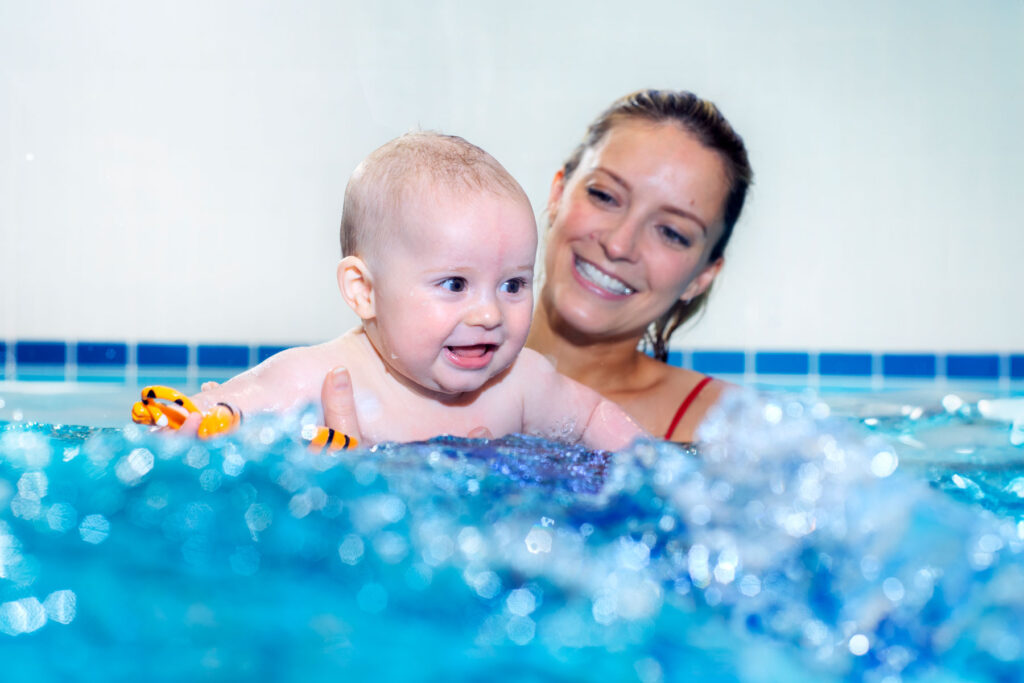
How do you take a baby swimming for the first time?
Our Water Babies Learn series is a selection of free, handy, and practical videos showing you key water confidence skills which you can do with your baby, regardless of where you are. It could be in the bath, shower, kitchen sink, or swimming pool. Whichever is easiest for you! The videos include our teachers who pass on their expertise to show you key skills you can do together, wherever you are. Click here to watch.
You can also submit an enquiry to find out more about Water Babies class availability, structure, and information from your local office. Click the link below and start your baby swimming journey today.
Can babies go underwater?
Babies are born with a reflex called the laryngeal reflex, or gag reflex. This reflex kicks into action when a baby feels water on their face, nose, or throat, and it causes the larynx to close and block the entrance to the airway. This means that no water can enter the lungs if a baby is submerged.
The gag reflex should not be confused with the mammalian dive reflex. This is an extreme emergency reflex which works if the gag reflex has not kicked in and the person was still being ‘forced’ and held under in a submersion for a long period, such as drowning.
It’s essential that submersions are done ‘with’ a baby, rather than ‘to’ a baby, so teachers must be trained to read baby’s cues to ensure if they don’t want to go underwater, they don’t! A baby who is crying, sleeping, or hiccupping should never be submerged.
Water Babies teachers are the best-trained baby swimming teachers in the world, and they work with the gag reflex to teach babies how to control their breath by using the question ‘Name, Are you Ready? Go’ before every submersion.
- The ‘Name’ gets the baby’s attention
- ‘Are you ready?’ Allows them to respond should they not want to go under
- ‘Go’ tells them to take their breath ready for submersion
After only a few weeks, you’ll see babies taking a breath and closing their eyes before they go underwater, which is incredible. If a baby reacts negatively to the ‘Name, Are you Ready? Go’, they are not submerged. This is essential to build trust between the baby and carer, or teacher, and by using this technique, we have little ones who are comfortable and confident in and around the water.
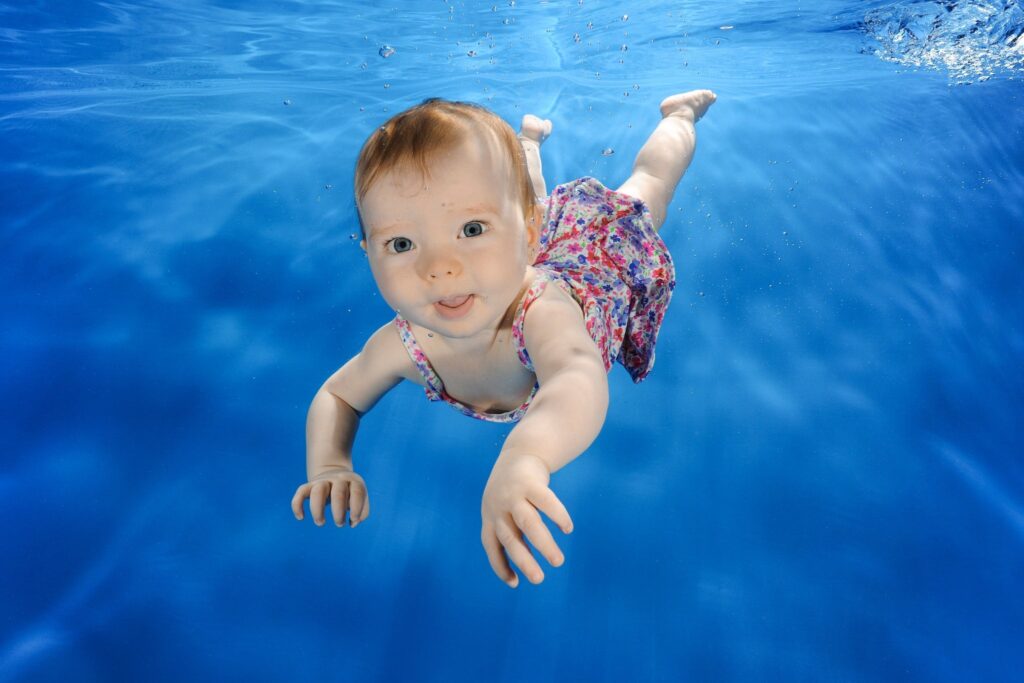
It’s important that submersions are part of baby swimming lessons as it’s a key water safety skill to learn. If a little one was ever to fall into water, they’re going to go underwater. If they’ve been taught how to control their breath, get themselves back up to the surface, turn around, and hold on, they have a much greater chance of not panicking because they’re not used to being underwater.
Babies can swim independently underwater for a short time (a few seconds) from a very young age, whereas they don’t have the strength to swim independently on the surface until they’re around 2 years old. So submersions are also an important part of building babies’ water confidence.
Three of the four swimming strokes also involve having the face in the water, so by introducing this as early as possible, we allow little ones to learn these strokes gently and progressively from a young age.
How do you take a baby swimming for the first time?
Our Water Babies Learn series is a selection of free, handy, and practical videos showing you key water confidence skills which you can do with your baby, regardless of where you are. It could be in the bath, shower, kitchen sink, or swimming pool. Whichever is easiest for you! The videos include
our teachers who pass on their expertise to show you key skills you can do together, wherever you are. Click here to watch.
You can also submit an enquiry below to find out more about Water Babies class availability, structure, and information from your local office. Click the link below and start your baby swimming journey today.
